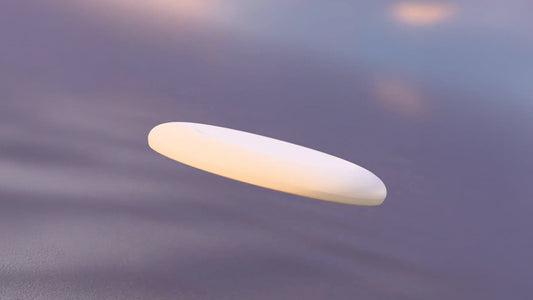At Balena, we believe materials shape the future of design. And sometimes, the most powerful proof of what a material can do comes from the creativity of those who use it. That’s exactly what we found in this collaboration with multidisciplinary designer Neyla Coronel, who explored the flexibility, adaptability, and comfort of Balena.Filaflex, our bio-based, compostable 3D printing filament co-developed with Recreus—through one of the most personal and technically complex garments: the bra.
Her project developed during her postgraduate studies at Fabricademy—transcends aesthetic experimentation. Through collaborating with Footwearology, who served as the bridge between her and the material, her vision was bought to life. It’s a wearable response to real-world design challenges: inclusivity, functionality, sustainability, and body acceptance. And it’s a clear signal of how circular 3D printing materials like Balena.Filaflex can unlock new possibilities in intimate wear, fashion, and beyond.
Designing with the Body at the Center
The idea was born from a personal journey. Raised in Colombia, Neyla felt pressure from a culture that promoted narrow beauty standards. Like many women, she struggled to find intimate wear that fit, not just physically, but emotionally. “I realized my body was never the problem, it was the market’s limited offerings,” she reflects.
This insight sparked a concept: what if the design system flipped? What if the garment adapted to the woman, not the other way around?
Using parametric modeling, 3D scanning, and computational geometry, Neyla developed a workflow where each bra could be custom-fit, adapting to body dimensions, movement, and change over time. At the core of the structure was an auxetic pattern, designed to expand and contract in sync with the wearer.

Why Balena.Filaflex?
Neyla’s vision needed a material that could match her values and her technical requirements. After early prototypes using PLA and TPU fell short, she turned to Balena.Filaflex, a material engineered for movement, comfort, and circularity. “Working with Balena,Filaflex was a breakthrough,” Neyla says. “Its flexibility is essential for something worn so close to the body. But beyond that, it’s biobased, compostable, and recyclable. It made the piece not just wearable—but meaningful.”
The softness and elasticity of the material enabled Neyla to bring complex, body-responsive geometries to life. It allowed her to rethink shape and structure entirely—acknowledging that breast size, body shape, and comfort change over time, and that intimate garments should change with them.
Expanding Possibilities for Fashion and Beyond
Balena.Filaflex isn’t just a filament—it’s an invitation to reimagine how products are made, worn, and disposed of. Neyla’s project demonstrates how this material can bridge performance and purpose: offering comfort, adaptability, and a radically reduced environmental footprint.
“It invites designers to rethink what’s possible,” she says. “It expands what 3D printing can do in fashion—especially in pieces that need to move and respond to the human body.”
Her experience also revealed new ideas for how users could participate in the design process—adjusting elements like pattern density, strap length, and expansion settings to co-create their own fit. “I don’t want this project to be only mine” she explains.
“It should be from a woman, to women—a shared space where design becomes personal and empowering.”

Looking Ahead
Neyla is now exploring new applications, from intimate wear to footwear and furniture. “Each new material brings a new learning curve,” she says. “But Balena.Filaflex showed me how material science can support designs that’s truly human and sustainable.”
We’re proud to support projects like Neyla’s—it’s designers like her who show what’s possible when material innovation meets personal vision. Thank you for choosing our material and bringing it to life in such a powerful way.
 "
"


